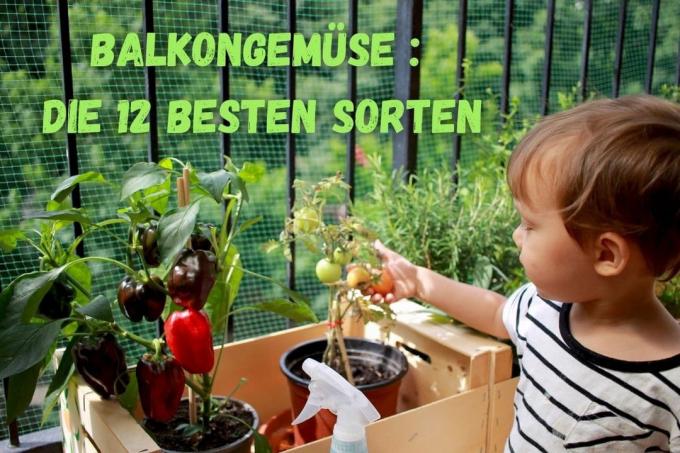
table of contents
- Why growing vegetables on the balcony is worthwhile
- Plants from A - K
- Plants from M - P
- Plants from Q - T
- Plants from U - Z
- frequently asked Questions
Apartments in the city usually do not have a garden, but often have a balcony, which is also suitable for growing vegetables. It's just that there isn't that much space, which is why choosing the right vegetables is so important.
In a nutshell
- Balconies have certain advantages over other cultivation areas
- Vegetables must have certain properties in order for them to be worth growing
- Diversity and high yield possible through different varieties
- With the right planning, harvest of fresh vegetables is possible all year round
Why growing vegetables on the balcony is worthwhile
A balcony is often very small, but has some advantages over large garden areas. On the one hand, maintenance is much easier and takes far less time. For example, weeds need to be cleared much less often. Heavy work such as digging or even mowing the lawn is no longer necessary.
It is also easier to keep track of things. Balconies, which get a lot of sun during the day, store the heat until late at night, which in turn benefits many types of vegetables. Cold-sensitive vegetables are also easier to protect from frost on the balcony. Diseases and pests are less common on the balcony. For example, snails can only be eaten by introduced animals.
Necessary properties of balcony vegetables:
- high yield in a small space
- easy-care
- easy cultivation or purchase of young plants
- space saving
- attractive to animals, necessary for the pollination of some vegetables
- easy to process and preserve
Plants from A - K
Cucumber
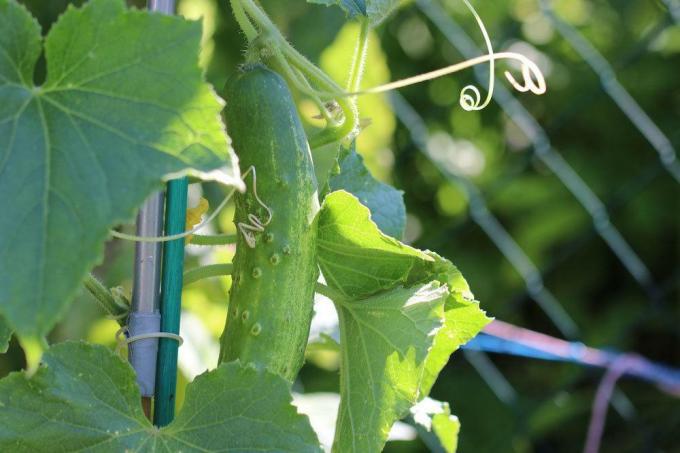
- suitable varieties: Mini cucumbers (snack cucumber 'Minik' F1), climbing, climbing varieties (Mexican date cucumber pepita)
- Sowing and planting time: Sow in April indoors, plant outdoors in mid-May or then direct sowing, individually in appropriately sized pots
- Location: sunny to partially shaded; airy, but protected from strong winds
- Substrate: not too dry, loamy and nutritious
- Care: Mulching, don't forget the trellis, tie up the shoots regularly, thin out the fruit
- Fertilizing and watering: high nutrient requirement, fertilize liquid about every two weeks, water a lot, keep moist
- Diseases and pests: mainly aphids and powdery mildew, possibly prefer resistant or tolerant varieties, read aphids, promote beneficial insects and protect against rain
- Harvest time and processing: Continuously harvest mini cucumbers as soon as they feel crunchy, eat them fresh or pickle them
potatoes

- suitable varieties: Rosara (red-skinned), Annabelle (waxy), Margit (floury)
- Sowing and planting time: Can be preferred indoors from February, put in soil between April and May, individually in deep pots
- Location: sunny, airy
- Substrate: Choose nutrient-rich, humus, the tallest possible container or plant sack
- Care: Pile or fill in soil around the plants, mulching
- Fertilizing and watering: Pour especially when it is dry for a long time, fertilize every two weeks over the irrigation water
- Diseases and pests: Colorado beetle rarely on the balcony, late blight and tuber rot possible in wet weather
- Harvest time and processing: The first potatoes are ready for harvest about 90 days after planting, immediate consumption, new potatoes cannot be stored for long
Note: It is only worth growing new potatoes on the balcony, which can be done continuously (until around August) where there is space for the vegetables.
Kohlrabi
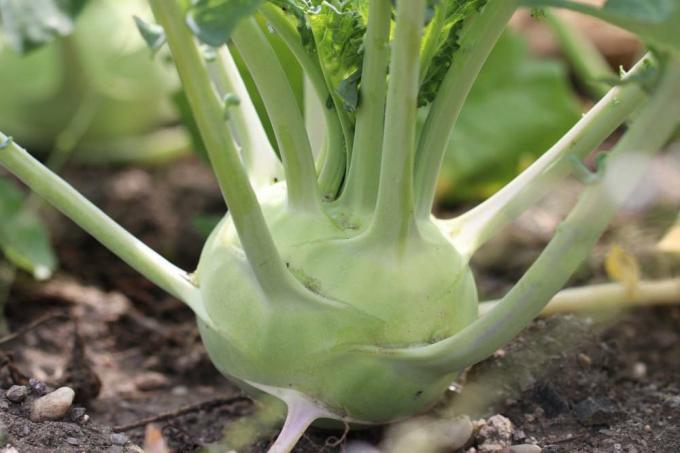
- suitable varieties: Azure Star (purple), Delikateß (white or purple)
- Sowing and planting time: Can be sown and planted from April, indoor cultivation possible from March, planting distance 30 cm
- Location: sunny, but also partial shade, not too dry
- Substrate: not too nutritious, moist but well drained
- Care: Loosen soil now and then
- Fertilizing and watering: Water regularly to prevent the kohlrabi from bursting and becoming woody, fertilize only a little
- Diseases and pests: Aphids and cabbage white caterpillars can be collected
- Harvest time and processing: Ready to harvest after around 20 weeks, eaten fresh or cooked as a vegetable
Plants from M - P
Carrots

- suitable varieties: Rondo (early), oxheart (summer carrot), Lange Stumpfe (late lager carrot)
- Sowing and planting time: Sow from March to August, from a planting distance of 5 cm, prefer deep pots
- Location: sunny, not too dry, airy
- Substrate: loose, without large stones, nutritious
- Care: Hold the earth loosely
- Fertilizing and watering: water regularly, fertilization is not necessary
- Diseases and pests: Aphids, carrot fly (possibly try mixed culture with onions)
- Harvest time and processing: early carrots are ready for harvest from June, late ones are easy to store in sand, otherwise freeze or boil down
paprika
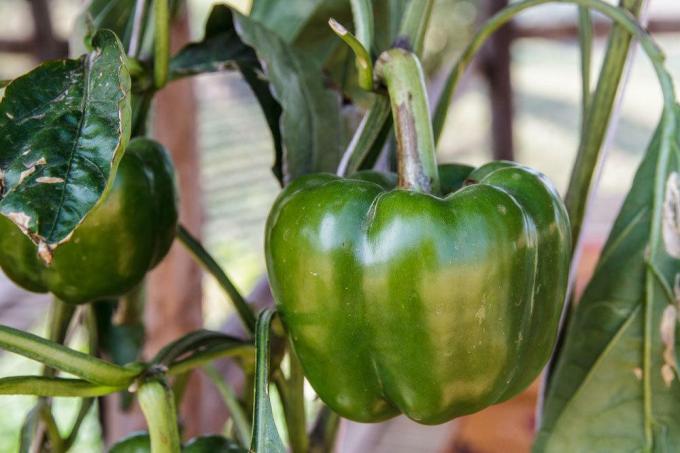
- suitable varieties: Jalapeño, hot peppers (both spicy); Sweet peppers: Hungarian tomato peppers (sweet), polka (block peppers), snack peppers (high-yield, small fruits)
- Sowing and planting time: Sow indoors from February, plant outdoors from mid-May, not hardy, one bucket per plant
- Location: sunny
- Substrate: permeable, nutrient-rich
- Care: For growing varieties, attach and tie up support, mulch
- Fertilizing and watering: keep moist, fertilize every two weeks, heavy eater
- Diseases and pests: rather seldom
- Harvest time and processing: green fruits already edible, ripe after several weeks, eaten fresh, freeze; sharp varieties are suitable for drying
Plants from Q - T
radish

- suitable varieties: Cyros and Fanal (very early, prefer in the house), Knacker (early), Riesenbutter (summer), Rudi and Eiszapfen (all year round)
- Sowing and planting time: from February to May and from August to September, planting spacing 3 - 5 x 15 cm
- Location: sunny to partially shaded
- Substrate: permeable, nutrient-rich
- Care: now and then loosen soil
- Fertilizing and watering: keep moist, no fertilization necessary
- Diseases and pests: hardly present, possibly caterpillars
- Harvest time and processing: Ready to harvest after 3 to 4 weeks, to be eaten fresh
salad

- suitable varieties: Pickled and cut salad, lollo rosso, rocket, lamb's lettuce
- Sowing and planting time: from March, rocket or lamb's lettuce also as autumn sowing, overwinters outdoors, planting distance between 5 and 10 cm
- Location: sunny, partial shade, not too dry
- Substrate: loose, not very nutritious
- Care: Chop every now and then, harvest the lettuce and cut lettuce regularly
- Fertilizing and watering: keep moist, but fertilize is not necessary
- Diseases and pests: Aphids
- Harvest time and processing: Harvest fresh leaves after a few weeks, with autumn sowing harvest until the following spring
tomatoes
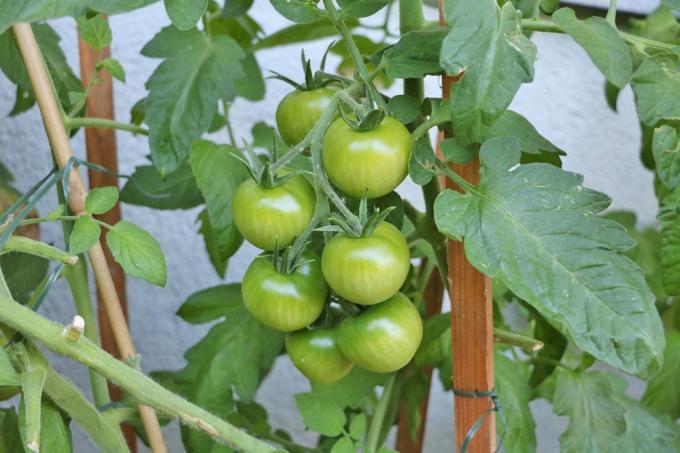
- suitable varieties: Cocktail, cherry or mini tomatoes (yellow currant)
- Sowing and planting time: Sow indoors from February, and plant outdoors in mid-May, one bucket per plant
- Location: sunny, airy, but not too windy, as protected from rain as possible
- Substrate: nutrient-rich, permeable
- Care: if necessary, support and tie up, remove old leaves regularly, mulch
- Fertilizing and watering: keep moist, fertilize every 2 weeks
- Diseases and pests: Aphids, fungal diseases in damp weather
- Harvest time and processing: as soon as the fruits are colored, eat fresh, dry or boil down
Plants from U - Z
zucchini

- suitable varieties: Black Forrest F1 (needs trellis), mini zucchini piccolo F1
- Sowing and planting time: Sow indoors from March or April, plant one bucket per plant in mid-May, large space requirements
- Location: sunny, sheltered
- Substrate: permeable, nutrient-rich
- Care: Mulching protects the shallow roots
- Fertilizing and watering: Fertilize every two weeks, keep moist
- Diseases and pests: mainly fungal diseases, which however hardly harm the plant
- Harvest time and processing: Young zucchini are ready to harvest from 10 cm, flowers can also be eaten, eaten fresh, frozen or boiled down
Sweet peas

- suitable varieties: Weggiser (medium altitude), formerly Heinrich (early maturity, medium altitude)
- Sowing and planting time: Sow from the end of April, planting distance 5 cm
- Location: sunny, sheltered but airy
- Substrate: permeable, nutritious, loose
- Care: Use trellis, if necessary line up shoots, lightly pile up the plant, chop
- Fertilizing and watering: Keep it moist at the beginning, do not let it dry out later, fertilization is not necessary
- Diseases and pests: Pea moth when there is too little air movement, fungal diseases when the location is too wet
- Harvest time and processing: Cultivation time approx. 3 months, consumption fresh, boil or freeze
Note: The crisp, sweet tasting pods are particularly popular with children.
Onions
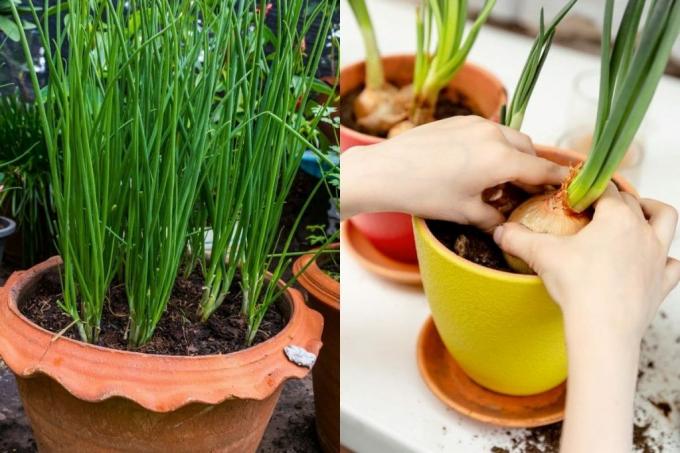
- suitable varieties: red and white onions, spring onions, winter onions
- Sowing and planting time: Set onions from March, winter onions from September, sow seed onions from March, planting distance from 5 cm
- Location: sunny or partial shade
- Substrate: permeable, loose, nutritious
- Care: Hold the earth loosely
- Fertilizing and watering: No fertilization necessary, keep moist
- Diseases and pests: Try onion fly, possibly mixed cultivation with carrots
- Harvest time and processing: Harvest onion sets from August or in spring, plait into braids and hang up dry, harvest perennial spring onions as required
frequently asked Questions
Strawberries, which are also available as climbing strawberries or hanging strawberries, are best suited. So-called column fruit can also be grown on the balcony or individual blueberry or currant bushes.
The space on the balcony should be used optimally, so it is beneficial if vegetables grow more in height than in width. Suspended pots are good, climbing vegetables also require little space.
If the soil in the pots is replaced every year, the crop rotation does not play a major role. Mixed cultivation can be carried out to a limited extent in window boxes or special raised beds. On the balcony, too, it is beneficial to ensure that the vegetables are planted in suitable neighbors, even if they do not share a pot.



